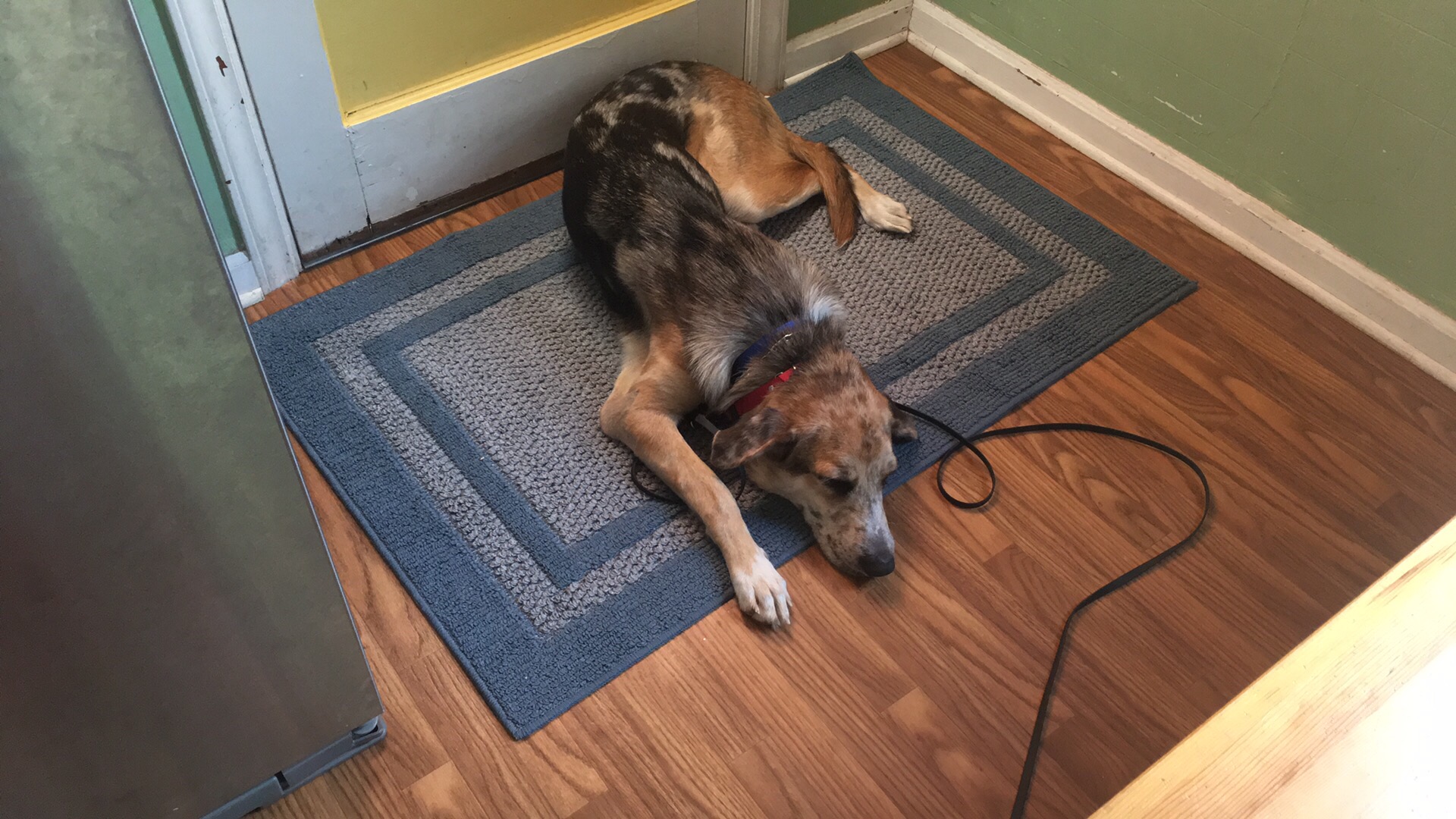The Three D's of Dog Training: How to Uplevel Your Dog's Obedience for Real World Reliability
Want to maximize your enjoyment of your dog in all settings? Adding the "Three D's" will be sure to help. Remember, while your dog is in the learning stages you need to introduce each "D" slowly.
1. Distance
The entire goal of obedience training is to have your dog choose to stay in command, even when you are farther away. So, we need to practice being further away.
When your dog chooses to stay in command, it frees you up to do other things. You don't have to hover over him or step on his leash. You can entertain guests without worry of your dog being underfoot. You can cook your dinner. You can work on the computer while your dog relaxes on place.
The first thing I like to do to build up distance from is walk in a circle around the dog while he's in a sit, down, or place. When you do this, make sure to "yes" your dog progressively for each step you take away from him. If he pops up, mark that with "no," then use leash pressure and/or e-collar pressure to guide him back into position.
Over time, you should be able to walk across the room, and eventually spend short periods of time outside the room without your dog breaking command.
2. Duration
If you are making the choice to improve your dog's obedience, it's likely because you want to include him in more of your life. Anytime we are bringing our dog along on a human excursion, we need him to relax into the command because he just might be there awhile.
Make sure that all your commands have an implied "stay," either by progressively delaying the reward OR by correcting for popping up OR both.
The best way to get duration out of your dog is to passively busy yourself with other things while he is in command. Once your dog understands what "down" means, focus on ignoring him. If he makes a mistake and pops up, be ready to follow that choice up with feedback, either through the leash or e-collar.
I have all my training clients shoot for 1-2 hours in command each day. It doesn't have to be forever, but in order to get a solid foundation for reliability later, your dog will need to practice. It's not fair of you to ask him to down for a 2 hour meal at a restaurant if you've never practiced it at home.
The good thing about training duration is that you can work it into your daily routine easily. I have my dogs place while I am cooking dinner and cleaning the house.
3. Distraction
This is my favorite part of training, also known as the "kitchen sink." For ultimate real world reliability, your dog will need to be competent in a variety of circumstances. Remember, we can't change what life throws at us, but we CAN change our reaction to it. If your dog is used to working around distractions, he will be less likely to meltdown when "life" inevitably happens.
Below are a list of ideas to get you started:
-Work your dog around other dogs (balanced dogs of course)
-Work your dog around cats and other animals
-Baby talk to your dog while in command
-Practice "down" in the car
-Work your dog outside the fence at a dog park
-Ring the doorbell or knock on the door
-Have your dog "place" or "down" while you have company (only do this if you are seriously willing to correct mistakes)
-Work your dog around your children playing
-Leave the front door open and practice obedience
-Work your dog outside in new places and situations (Outdoor markets, fairs, concerts, sporting events, restaurant patios, hiking trails, the possibilities are endless!)
-Work your dog with kibble or treats on the floor
-Recall your dog off his food bowl
-Recall your dog off a ball or stick
-Work your dog inside a store that allows pets like PetCo, Tractor Supply, or Lowes
-Have a family dance party while your dog stays on place

